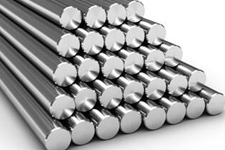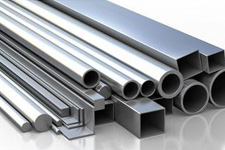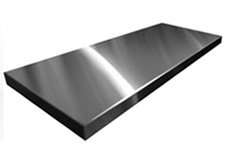What is tantalum and tantalum alloys?
Tantalum is a rare, hard, blue-gray, lustrous transition metal that is highly corrosion-resistant. It is part of the refractory metals group, which are widely used as minor components in alloys. Tantalum is also used to produce a variety of alloys that have high melting points, strength, and ductility. Alloyed with other metals, it is also used in making carbide tools for metalworking equipment and in the production of superalloys for jet engine components, chemical process equipment, nuclear reactors, missile parts, heat exchangers, tanks, and vessels. Because of its ductility, tantalum can be drawn into fine wires or filaments, which are used for evaporating metals such as aluminium. Since it resists attack by body fluids and is nonirritating, tantalum is widely used in making surgical instruments and implants.
Tantalum is inert against most acids except hydrofluoric acid and hot sulfuric acid, and hot alkaline solutions also cause tantalum to corrode. This property makes it a useful metal for chemical reaction vessels and pipes for corrosive liquids. Heat exchanging coils for the steam heating of hydrochloric acid are made from tantalum. Tantalum was extensively used in the production of ultra high frequency electron tubes for radio transmitters. Tantalum is capable of capturing oxygen and nitrogen by forming nitrides and oxides and therefore helped to sustain the high vacuum needed for the tubes when used for internal parts such as grids and plates.
Tantalum-tungsten alloy
Tantalum-tungsten alloys are in the refractory metals group that maintain useful physical and chemical properties even at high temperatures. The tantalum-tungsten alloys are characterized by their high melting point and the tension resistance. The properties of the final alloy are a combination of properties from the two elements: tungsten, the element with the highest melting point in the periodic table, and tantalum which has high corrosion resistance.
The Tantalum-Tungsten alloys typically vary in their percentage of Tungsten. Some common variants are:
(Ta – 2.5% W) → also called 'tantaloy 63 metal.' The percentage of tungsten is about 2 to 3% and includes 0.5% of niobium. This alloy has a good resistance to corrosion and performs well at high temperatures. An example application is piping in chemical industries.
(Ta - 7.5% W) → also called 'tantaloy 61 metal,' has between 7 and 8% tungsten. The difference from this alloy to the others is that this alloy represents a high resilience modulus while maintaining its refractory properties.[1]
(Ta - 10% W) → also called 'tantaloy 60 metal,' contains 9 to 11% tungsten. This alloy is less ductile than the other alloys and exhibits less plasticity. Applications include high-temperature, high-corrosion environments such as aerospace components, furnaces, and piping in nuclear plants.




